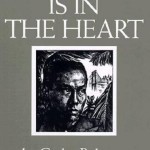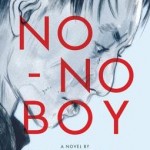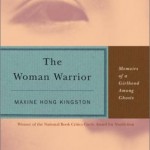May is Asian Pacific American Heritage Month, so the New York Public Library offered up a reading list of “Asian-Pacific American Heritage Picks.” Although there were a few great choices, like Ruth Ozeki’s A Tale for the Time Being and Viet Thanh Nguyen’s The Sympathizer, there were also some real head-scratchers. James Michener’s Hawaii? Memoirs of a Geisha? In fact, more than a third of the authors named were not Asian American or Pacific Islander at all. The NYPL seems to have fallen victim to the common practice of seeing “APA heritage” not as an exploration of the history and experiences of Asians and Pacific Islanders in the United States, but as an opportunity to celebrate “Asian stuff” in some vague, and vaguely exoticizing, way.
Of course, there are plenty of other better lists out there. I’m not a big fan of list-making–for a literature professor, it feels a bit too much like canon-making–but when lists like the NYPL’s are what many people are seeing, there’s obviously a need for better information, especially for readers who know little about APA literature. So my approach is going to be to try to make a lot of lists of different kinds. My first: 15 “classics” of Asian American (and Canadian) fiction, all from before 1990. These are not the only classics or even the “best,” but simply 15 books out of a rich tradition of Asian American writing.
With thanks to Jenny Wills, Eugenia Beh, Jennifer Ho, Barbara Jane Reyes, Viet Nguyen, Catherine Fung, and others for suggestions.
- Sui Sin Far, Mrs. Spring Fragrance and Other Writings (1914). Sui Sin Far was the pen name of Edith Maud Eaton, the Canadian daughter of an English father and a Chinese mother, who at the turn of the 20th century wrote some of the first fiction to focus on the Chinese North American and mixed-race experience.
- Dhan Gopal Mukherji, Caste and Outcast (1923). Autobiography of one of the first major South Asian American writers.
- Younghill Kang, East Goes West (1937). Fictionalized memoir of an immigrant Korean intellectual in the U.S. by the first Korean American novelist.
- Carlos Bulosan, America Is in the Heart (1943). Autobiographical novel of migration, labor, activism, and American idealism by one of the greatest of Filipino American literary figures.
- Toshio Mori, Yokohama, California (1949). The first collection of short fiction published by a Japanese American chronicles Japanese American life in the pre-WWII era.
- John Okada, No-No Boy (1956). The first Japanese American novel, No-No Boy is an iconic portrayal of the aftermath of a young Japanese American man’s refusal to pledge loyalty to the US and serve in the armed forces during the Japanese American internment during WWII.
- Louis Chu, Eat a Bowl of Tea (1961). A frank and at times comic depiction of the “bachelor society” of Chinatown created by the Chinese exclusion acts.
- Wilfrido D. Nolledo, But for the Lovers (1970). Sprawling novel of the Philippines during WWII.
- Milton Murayama, All I Asking for Is My Body (1975). Acclaimed novel of plantation life in Hawaii, providing a useful contrast to accounts of Japanese American life on the mainland.
- Maxine Hong Kingston, The Woman Warrior (1976). Incomparable, inventive autobiographical fiction that interweaves Chinese history and myth with a Chinese American woman’s experience. If you read only one work of Asian American literature, make it this one.
- Shawn Wong, Homebase (1979). A coming-of-age story that reaches back through the history of Chinese America.
- Joy Kogawa, Obasan (1981). Powerful novel of the internment of Japanese Canadians during WWII and the traumas that surround that experience, as seen through the eyes of a young girl.
- Ronyoung Kim, Clay Walls (1987). One of the first major Korean American novels. Portrays several generations of a Korean American family’s experience from the 1910s to the 1940s.
- Hisaye Yamamoto, Seventeen Syllables and Other Stories (1988). Stories spanning over 40 years, encompassing Japanese American internment and the experiences of Japanese American women.
- Bharati Mukherjee, Jasmine (1989). One of the first major South Asian American novels, a provocative and sometimes harrowing account of a young Indian woman’s survival as an immigrant in the US.


